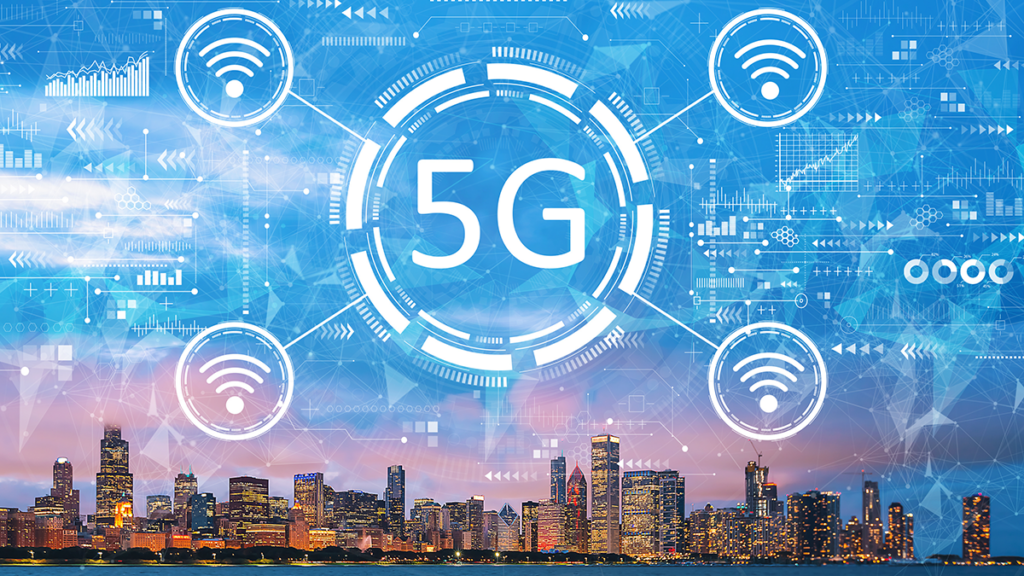The impact 5G has on IoT can’t be ignored. For better or for worse, it will reshape how manufacturers, telecommunication companies, and end users deploy and utilise internet-connected technologies. What will its true impact be?
How are 5G and IoT connected?
5G is the fifth generation of cellular network technology. Its predecessor — 4G — came into existence over a decade ago. This latest advancement works similarly, transferring data using low-, mid- and high-band frequencies.
5G is different because it mainly uses high-band — also known as millimetre wave — spectrums. It uses frequencies of 24 Gigahertz (GHz) and higher, which supports 1-5 Gbps download speeds. It might even reach up to 10 Gbps. 4G networks can only offer up to 1 Gbps.
Wireless communications like 5G use those radio frequencies to carry information. IoT devices depend on them to deliver data packets to their receivers. For example, an internet-connected thermostat needs a wire-free way to send temperature details to a smart home hub.
How does 5G technology enhance IoT?
The excitement surrounding 5G isn’t just hype — it can potentially solve some of the most common IoT pain points.
Here’s how 5G improves IoT technology:
- Faster data transfer: 5G networks can transfer data up to 10 times more rapidly than 4G. It could be 100 times faster, according to some estimates. IoT devices would be able to send massive amounts of information in seconds.
- Enabled network slicing: 5G makes network slicing — dividing a network into layers — possible. Each layer can have custom parameters like latency and speed. They can also be tailored to meet various IoT use cases.
- Increased traffic capacity: 5G networks can handle much more traffic than 4G, meaning IoT adoption can continue expanding without experiencing delays.
- Lower latency: While 4G has a 20-30 milliseconds latency, 5G can reach under 10 milliseconds. As a result, IoT devices can send and receive data with an almost undetectable delay.
- Increased bandwidth: Since 5G networks can handle more IoT devices, they maintain their top speeds better and become more reliable.
- Increased connection density: How many devices can 5G IoT connect? It can handle up to 1 million IoT devices per square kilometre. This development makes large-scale IoT deployment much more accessible.
Low data transfer speed, poor connection density support and high latency are issues holding IoT back from its true potential. 5G provides an all-in-one solution.
How 5G could negatively impact IoT
5G improves many of the IoT’s current issues. However, like most technologies, it creates new ones. For starters, it uses too much energy. Although technically more efficient than 4G, it enables more network traffic and larger data transfers, which requires much more power.
5G networks require more base stations — radio receivers that maintain the connection between a network and its users — per square kilometre. Their energy consumption is ultimately worse. This issue impacts sustainability and the cost of deployment.
Another potential negative impact is the reduced range of 5G. While high-band frequencies enable lightning-fast internet connections and data transfers, they can only travel short distances. They’re also more prone to interference — buildings, mountains, trees and hills might block the signal from reaching its destination.
Moreover, high-band frequencies can’t travel as far as mid-band ones. IoT manufacturers and telecommunication companies will need to build numerous expensive base stations to reach the full potential of 5G technology.
Potential solutions for the negative impacts
IoT manufacturers will be more accepting of 5G connections if they can avoid the negative impacts of adoption. While no one-size-fits-all solution exists, there are a few promising approaches they should consider.
There are numerous solutions for 5G’s high energy consumption. One is an idle mode where IoT devices “sleep” when not actively transferring data. Another is power source optimisation — a longer battery life means less reliance on the electrical grid.
The strategic deployment of IoT ecosystems and 5G base stations could fix the issue of short-range frequencies. Manufacturers and telecommunication companies could work together to maximise the impact of their infrastructure.
How will 5G transform IoT technology?
5G technology goes beyond what the world thought was possible only a few years ago. It has the potential to reshape how IoT manufacturers and end users view the internet-connected ecosystem. In time, it could make large-scale adoption standard or prompt the development of cutting-edge devices.
While the world will collectively build and deploy billions of IoT devices within the next few years, most will likely be connected by 4G networks. Even though 5G is no longer a concept and shows incredible promise, it will take years to become the new standard.
This technology combination looks promising
IoT manufacturers and telecommunication companies that approach 5G strategically could reach their full potential while avoiding most negative impacts. If they’re careful about adopting this new technology, the results could be transformative.
Zac Amos is the Features Editor at ReHack. With over 4 years of writing in the technology industry, his expertise includes cybersecurity, automation, and connected devices. For more of his work, follow him on LinkedIn.
